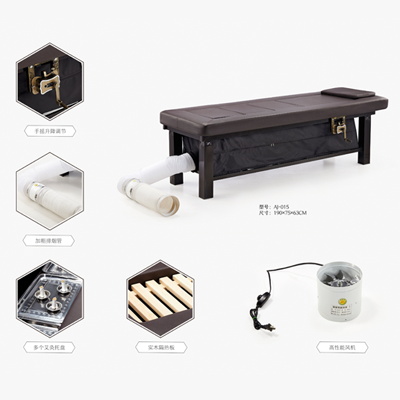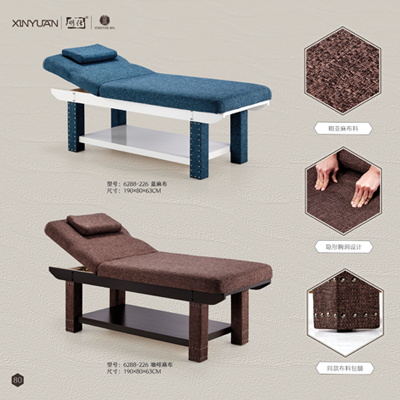What is a massage bed?


1. The place where the massage bed is used. The massage bed is one of the common furnitures in massage parlors, beauty salons, physiotherapy hospitals, health care clubs, spas, foot baths, baths, etc. Its unique structural design contributes to the various angles and orientations of the body during the physical therapy process. It is convenient for the masseur to perform the corresponding operation.
2, the material of the massage bed. Usually, the bottom of the massage bed has a wooden frame, an iron frame sneeze, a stainless steel frame, and an aluminum alloy frame. Generally, the cost of the wooden frame is relatively high, followed by aluminum alloy and stainless steel frame. Among them, the iron frame is relatively affordable, and the fastness is also reliable. The disadvantage is that after a long time, the paint will fall off and the interface will open the glue. The stainless steel frame is recommended to be used in places such as bathing squats or water, and it is not easy to rust even if the moisture is high. The iron frame sneeze looks very smooth, and it is not easy to rust, and it is easy to weld to a strong one, but it is not as rust-resistant as stainless steel in a place that is too wet. The massage bed of the solid wood bed frame is also highly reliable, and the grade is higher, but the price is higher due to the higher cost.
3, the role of massage bed includes shiatsu massage, spinal correction, warming and sputum. For example, warming and applying heat can enhance the energy of white blood cells, thereby enhancing the bactericidal function, promoting the metabolism of the adrenal cortex, and enhancing the inflammatory function and immunity. Heat is a type of physical energy. The use of thermal energy for energy conversion in living organisms is a common method used in physical therapy. It stimulates the meridians, acupuncture points and pain parts of the human body to a certain extent, and gives the warmth of the meridians to make the circulation of blood and blood smooth, thus achieving the purpose of preventing and curing diseases.




